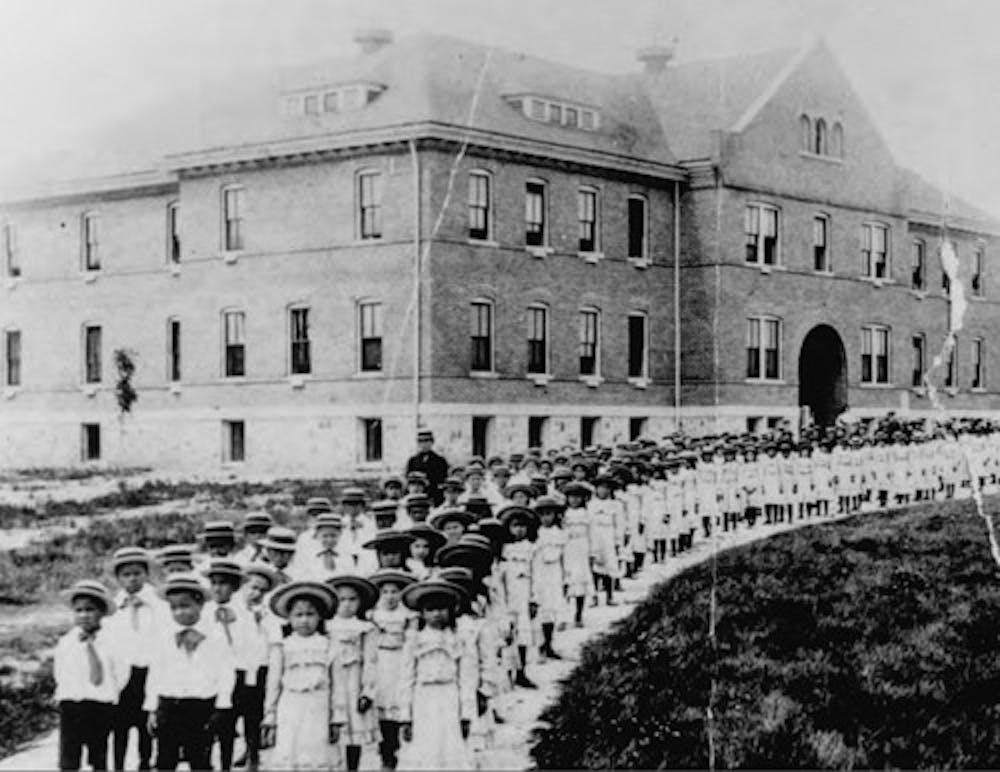Native tuition waiver program struggles for support since agreement

Debate about Michigan's responsibility to fund Native American students' college tuition began before the 20th Century.
For decades, state legislators attempted to remove the program from the state's obligations while others have worked to defend its place in the state budget.
Here are several important years in the evolution of the Indian Tuition Waiver program.
1836 – According to documents from the Michigan Legislative Service Bureau, the agreement dates back to the Washington Treaty of 1836, where the Ottawa and Chippewa tribes relinquished to the federal government in exchange for educational resources and facilities.
"Five thousand dollars per annum, for the purpose of education, teachers, school-houses, and books in their own language, to be continued twenty years, and as long thereafter as Congress may appropriate for the object," reads the document.
To honor the Washington Treaty, the U.S. Congress appropriated money for the construction of Native American schools in Mount Pleasant, Bay Mills and the Keweenaw Bay and funded them until 1935.
1934 — Michigan Gov. William Comstock petitioned the federal government, in a letter known as the Comstock Agreement, to turn over the land and building of the Michigan Indian Industrial Boarding School in Mount Pleasant, to make way for a school for the developmentally disabled.
The federal government agreed to give the land toMichigan in under several conditions: the state would take over the responsibility of Native education, providing elementary and high school as well as college education and job training for Native Americans.
1965 — The Michigan legislature passed public act 300, which established the Michigan Commission on Indian Affairs. An early priority of the commission was to persuade the state to offer a college scholarship program based on the Comstock Agreement.
1972 — Members of the Great Lakes Indian Youth Alliance filed a class action lawsuit against the University of Michigan, stating the university violated a treaty agreement from 1817, which they said exchanged land use for education.
Although the lawsuit was denied, this case is seen as pivotal in creating the tuition waiver program.
1976 — The loss of the Great Lakes Indian Youth Alliance's lawsuit ignited greater interest from Native American students for education funding and the state's role.
Receiving support from several African American lawmakers, and then-Gov. William Milliken, the legislature passed public act 174 also known as the Waiver of Tuition for North American Indians act of 1976.
This act provided free, state-funded college tuition to full-time students who are legal residents of Michigan for 18 months and are certified one-half Native American blood quantum.
1978 — The waiver program was amended to require only one-quarter Native American blood quantum, 12 months legally residing in Michigan, and that applicants can attend part or full-time.
1981 — Sen. Alvin DeGrow sponsored Senate Bill 426 to repeal the program. He argued it was discriminatory as it only gave benefits to one race or group of people, and it was an "expensive luxury" the state could no longer afford.
1995 — Then Gov. John Engler announced fiscal year 1995 would be the final year of the waiver program. He argued the state could not afford the program, if it did not limit the funding allocated in the program and tribal revenues had increased with the emergence of the gaming industry.
The House and Senate Appropriations committees both recommended, against Engler's announcement, that the waiver program continue. The bill to end the program died in the Senate.
Engler promised he will veto any higher education budgets that include Indian Tuition Waiver funding.
1996 — The Michigan Department of Management and Budget announced the program would not be included in the FY 1996 budget.
Sen. John Schwarz, who served as chair of the Higher Education Appropriations Subcommittee supports the elimination of the program from the state's budget, but proposes each university be granted the average tuition funding it received taken from a three-year period as waiver reimbursements.
More than twenty years into the modern form of the program, according to state-conducted study of the program, about 2,700 students were in the program as of 1996.
Also in the report, 70 percent of recipients were reportedly first generation part-time students, unmarried 30-year-old women with two to four dependents and making a mean gross annual income of $22,000. Most applicants were also described as ineligible for other forms of financial aid.



